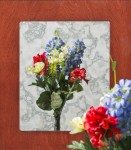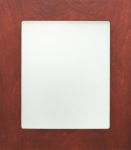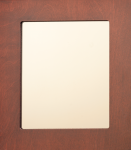Mirror
We offer mirrors in flat, beveled, framed, convex, auto, tinted and antique mirror.
Mirrors are manufactured using high quality float glass. After cleaning with a cerium oxide cleaning solution a thin layer of silver (silver nitrate) is applied using a chemical bonding process. After that a layer of copper is applied to separate the silver from the two coats of paint that are sprayed on last to give it a durable and strong backer.
Cutting a mirror exposes a micro layer of silver around the edge, and exposed to the elements silver oxidizes and becomes black after an extended period of time. Upon request we can seal the edges of your mirrors to prevent the edge from blackening, which is recommended if it is being used in a high moisture environment. For example a bathroom.
See our Mirror Gallery for ideas for your project.
Below is a list of thicknesses and stock sheet sizes that we offer in mirror.
Clear Mirror
1/8″ 40″ x 84″, 60″ x 78″, 48″ x 96″, 36″ x 84″
3/16″ 48″ x 120″, 40″ x 120″
1/4″ 48″ x 120″, 36″ x 120″, 42″ x 120″, 72″ x 120″
Grey and Bronze Mirror: Call
History of Mirrors
In ancient times, mirrors were made from polished metal. Bronze mirrors were used in Greece, Egypt, and Rome. The art of making flat glass mirrors originated in the Middle Ages. It was known in Nuremberg and in Venice in the 14th century. The Venetians soon became leaders in mirror production because of the superior quality of their work. Venetian mirrors were made of blown-glass cylinders that were split and laid out into flat sheets. The back of the glass was coated with an amalgam of tin and mercury. In the 17th century a group of Venetian craftsmen became established in France.
The technique of silvering mirrors using silver nitrate was discovered in the mid-19th century by Justus von Liebig, a German chemist.





